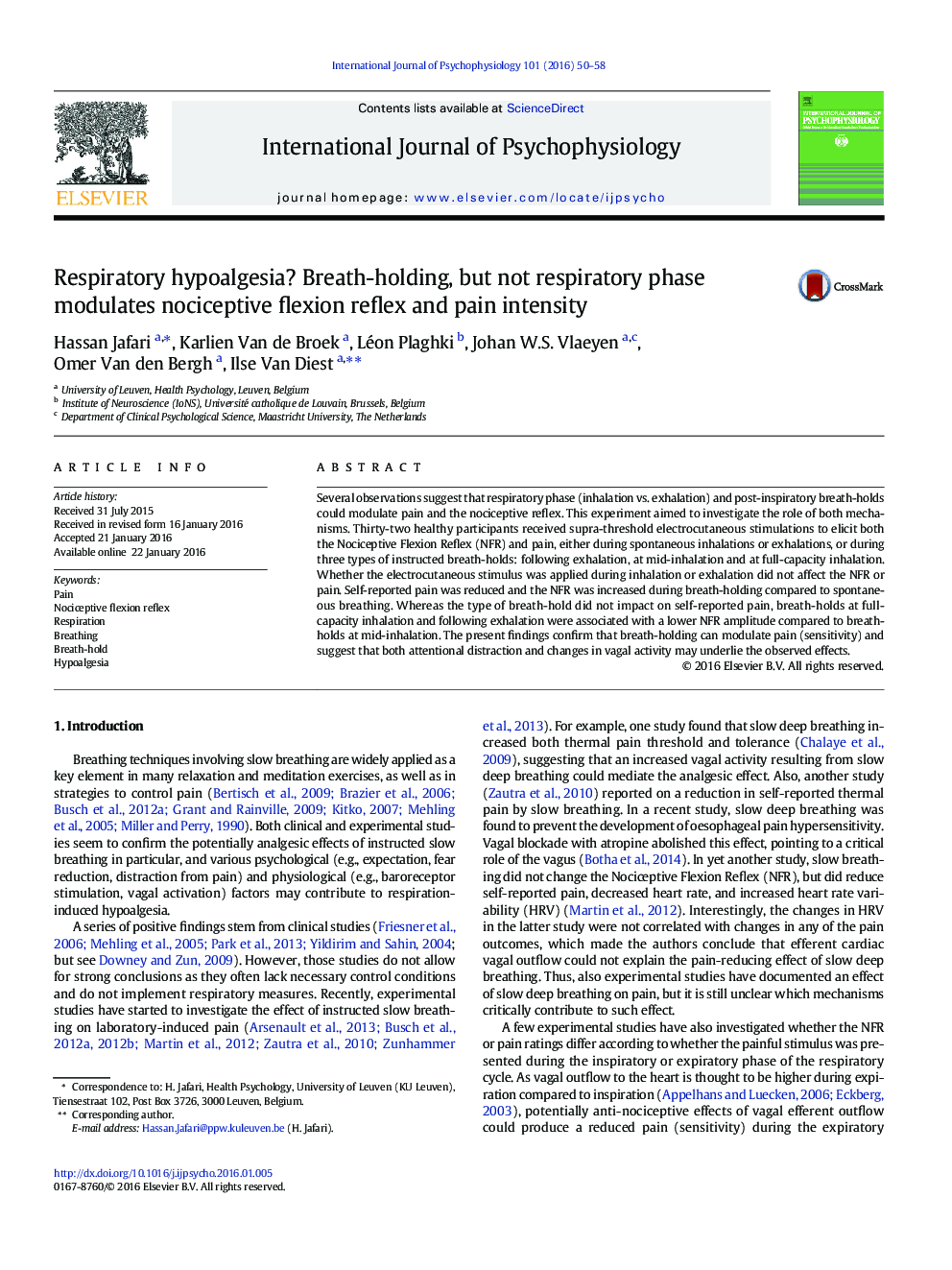| Article ID | Journal | Published Year | Pages | File Type |
|---|---|---|---|---|
| 7295134 | International Journal of Psychophysiology | 2016 | 9 Pages |
Abstract
Several observations suggest that respiratory phase (inhalation vs. exhalation) and post-inspiratory breath-holds could modulate pain and the nociceptive reflex. This experiment aimed to investigate the role of both mechanisms. Thirty-two healthy participants received supra-threshold electrocutaneous stimulations to elicit both the Nociceptive Flexion Reflex (NFR) and pain, either during spontaneous inhalations or exhalations, or during three types of instructed breath-holds: following exhalation, at mid-inhalation and at full-capacity inhalation. Whether the electrocutaneous stimulus was applied during inhalation or exhalation did not affect the NFR or pain. Self-reported pain was reduced and the NFR was increased during breath-holding compared to spontaneous breathing. Whereas the type of breath-hold did not impact on self-reported pain, breath-holds at full-capacity inhalation and following exhalation were associated with a lower NFR amplitude compared to breath-holds at mid-inhalation. The present findings confirm that breath-holding can modulate pain (sensitivity) and suggest that both attentional distraction and changes in vagal activity may underlie the observed effects.
Related Topics
Life Sciences
Neuroscience
Behavioral Neuroscience
Authors
Hassan Jafari, Karlien Van de Broek, Léon Plaghki, Johan W.S. Vlaeyen, Omer Van den Bergh, Ilse Van Diest,
